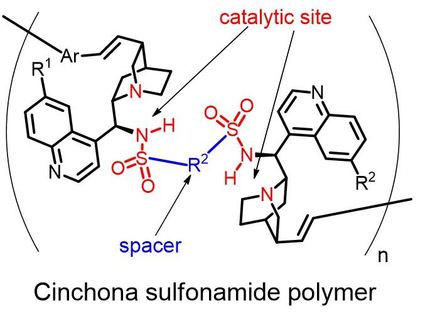Biomimetic polymer synthesis enhances structure control
A new biomimetic approach to synthesising polymers will offer unprecedented control over the final polymer structure and yield advances in nanomedicine, researchers say.
In a University of Warwick-led study published in the journal Nature Chemistry, researchers from the UK (Prof Rachel O’Reilly, Dr Ronan McHale, and Joseph Patterson of the University of Warwick) and Australia (A/Prof Per Zetterlund of UNSW) outline a new method of polymer synthesis based on combination of segregation and templating – a pair of natural approaches that have evolved over billions of years that direct complex biological processes.
Segregation improves biochemical control in organisms’ cells by organising reactants into defined, well-regulated environments, while the transfer of genetic information is a primary function of templating, the paper states.
Professor Rachel O'Reilly from the Department of Chemistry at the University of Warwick said: “The ability to synthesise polymers with such precision and control will enable us to tailor make polymers for specific needs, with major applications in materials chemistry, nanotechnology and nanomedicine.”
One way of growing polymers is through a process known as radical polymerisation, whereby a free radical initiates chain growth by adding to a monomer unit, generating a new radical that in turns adds to monomer, etc.
However, conventional radical polymerisation yields polymers of ill-defined structure - they have a wide-range of molecular weights, the monomer sequence distribution along the chain is difficult to control and the length of the chain cannot be predetermined.
Professor O’Reilly said: “One of the long-standing goals in synthetic polymer chemistry is to be able to synthesize polymer of well-defined microstructure. Our approach offers much better control over molecular weight distributions, gives access to higher molecular weights, and offers potential to control tacticity and monomer sequence distribution.”
This allows researchers to better control the physical and mechanical properties of the polymer, which determines its functionality, and could enable sequence-controlled polymerisation and thus controlled polymer folding, a pinnacle of polymer science.
“The overall structure in biopolymers is dictated by how the polymer chains fold – or arrange themselves in space – as exemplified by the DNA double helix,” said Professor O’Reilly.
“To be able to mimic such behaviour it is necessary to be able to prepare polymers with very specific distributions of monomers along the chain.”
Other news from the department science
These products might interest you
Most read news
More news from our other portals
See the theme worlds for related content
Topic world Synthesis
Chemical synthesis is at the heart of modern chemistry and enables the targeted production of molecules with specific properties. By combining starting materials in defined reaction conditions, chemists can create a wide range of compounds, from simple molecules to complex active ingredients.

Topic world Synthesis
Chemical synthesis is at the heart of modern chemistry and enables the targeted production of molecules with specific properties. By combining starting materials in defined reaction conditions, chemists can create a wide range of compounds, from simple molecules to complex active ingredients.
































































